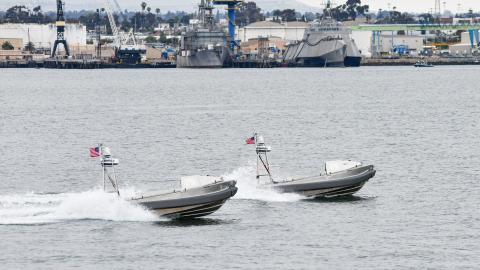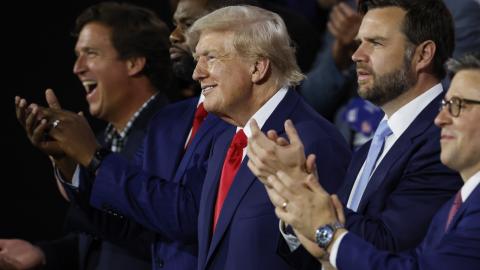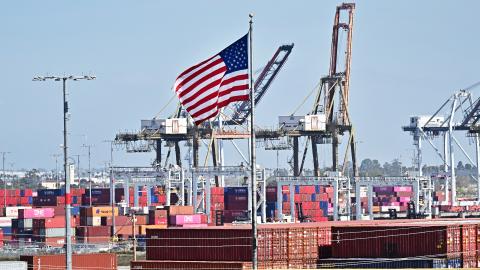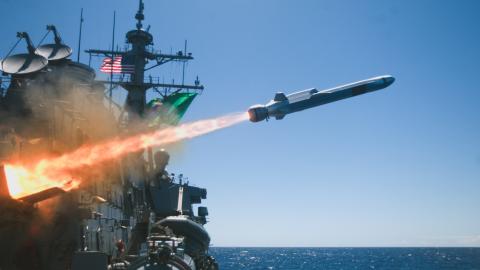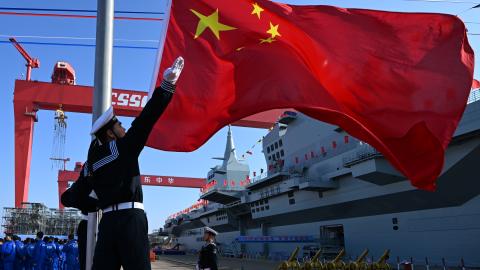The United States is not in a cold war with China, and that’s precisely the problem. Unlike the Soviet Union, the Chinese Communist Party has no interest in a stable, rules-based standoff. The CCP is preparing for something far more dangerous: a hot war.
China’s military wing, the People’s Liberation Army, is actively gearing up for a confrontation with the United States, whether over Taiwan, the South China Sea or elsewhere. The endgame is displacing American power and achieving global dominance.
Yes, the United States still commands immense deterrent power, but deterrence depends overwhelmingly on perception. The CCP has never internalized the doctrine of mutually assured destruction, which defined and restrained U.S.-Soviet confrontation during the Cold War.
That’s why the Cold War stayed cold. China, misled by its geographic depth, ideological zealotry and a staggering disregard for human life on the part of its communist leaders, along with a conviction that a crippling aversion to casualty binds the U.S., continues to see American deterrence, nuclear or conventional, as a paper tiger.
Hence, China’s relentless military brinkmanship: daily incursions near Taiwan, aggression against India, harassment of Japan and the Philippines. This pattern is not accidental.
The Sino-Soviet split in the 1950s and 1960s was triggered precisely by Mao Zedong’s disgust at Moscow’s unwillingness to fight a nuclear hot war with the United States. To Mao, the Soviets had gone “revisionist” and soft by embracing the mutually assured destruction doctrine and accepting American deterrence. That strategic contempt still echoes in Beijing.
The U.S. is not in a cold war with China for another, more structural reason. Unlike the Soviet Union, China is fully and foolishly integrated into the global free market.
The U.S. has handed the CCP a strategic gift — access to capital, technology and markets — without demanding adherence to reciprocal norms. The result? The CCP enriches itself by gaming the system through intellectual property theft, forced technology transfers, state-backed dumping and widespread espionage masked as “joint ventures.”
This never would have flown during the Cold War. The Soviet bloc was economically decoupled from the West, and that firewall was essential.
The prerequisite for a cold war between the U.S. and China — full decoupling between democratic capitalism and totalitarian command economies — does not exist.
The Cold War was a war of ideas. The United States promoted liberal democracy and human rights through powerful tools such as the U.S. Information Agency and the Helsinki Accords.
Today, we have reduced our strategic competition with China to a tech war, a trade war and a hypothetical battlefield confrontation, assuming that the rules of engagement will somehow hold. Meanwhile, we have dismantled our ideological infrastructure: Radio Free Asia is defunded, and institutions such as the National Endowment for Democracy are marginalized. As a result, we have surrendered the high ground of moral and ideological clarity. Our soft power is at half-staff.
Yet, the CCP is terrified of it. Just as the Soviets feared the power of American ideals, the CCP is haunted by “color revolutions,” “black hand” conspiracies and perceived plots to destabilize its regime. Beijing’s paranoid rhetoric about Washington’s “Cold War mentality” is proof of what it fears most: a real, ideological confrontation between freedom and authoritarianism.
During the Cold War with the Soviets, the West was unified. Policy coordination among allies was non-negotiable. Export controls were executed collectively, ensuring no Western nation could profit by breaking ranks.
Today, the U.S. leads a coalition riddled with opportunistic spoilers. Many U.S. allies refuse to “choose sides” and pretend that the outcome of U.S.-China competition has no bearing on their security or sovereignty.
They forget or ignore that the CCP’s model of techno-authoritarian governance is incompatible with liberal democracy. By refusing to confront it, they empower it.
During the Cold War, U.S. elites — Democratic and Republican, academic and political — recognized the moral rot of the Soviet system. Presidents including John F. Kennedy and Ronald Reagan and policymakers such as George Kennan and Richard Pipes were unequivocal.
They supported dissidents such as Alexandr Solzhenitsyn, Andrei Sakharov, Vaclav Havel and Lech Walesa, not because they romanticized them but because they understood the stakes.
Today, supporting Chinese dissidents is dismissed as irresponsible, even dangerous. The very idea of regime change is taboo in Washington circles. Meanwhile, the CCP’s United Front Work Department is conducting regime changes in America at all levels. It infiltrates our universities, cultivates proxies and co-opts thought leaders in institutions vandalized by smug and often phony “realists.” “Blame America first” professors at Columbia, Harvard, and Johns Hopkins universities, with their nauseating sycophancy to Beijing, lend legitimacy to a regime that would erase their freedoms if given the chance. The Soviets never enjoyed such luck.
Let us be clear: Preparing for war with the People’s Liberation Army and competing with Chinaeconomically is essential but insufficient.
We also must engage in a real cold war. That means drawing red lines and enforcing them. It means confronting every incremental CCP escalation with calculated resolve to give American deterrence true credibility. It means full strategic decoupling from CCP-controlled supply chains. It means backing Chinese citizens not with bombs but with moral and diplomatic support as they seek regime change on their terms. It also means purging CCP influence from within our institutions. Our intellectual and corporate elites — those who chose profit over principle, comfort over courage — must be held accountable.
A cold war is not won through complacency.
The choice is not between confrontation and peace. The real choice is between a cold war now or a hot war later. The alternative is not coexistence; it is collapse: the disintegration of the democratic global order and its replacement with Beijing’s Orwellian vision, what the CCP euphemistically calls “a community of common destiny for mankind.”
We do not wish for a cold war, but we must fight one before it’s too late.
